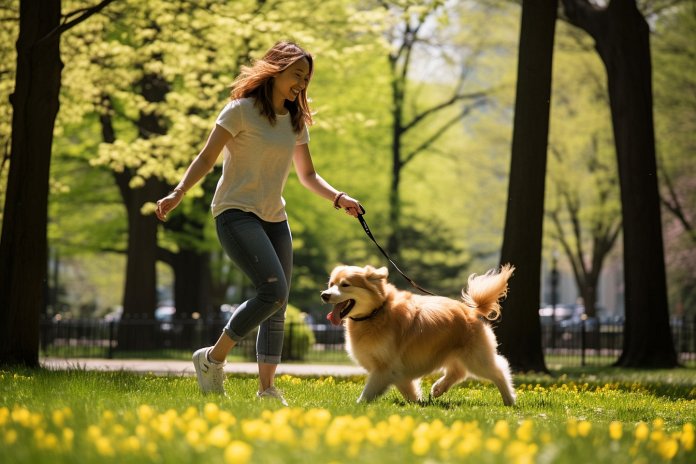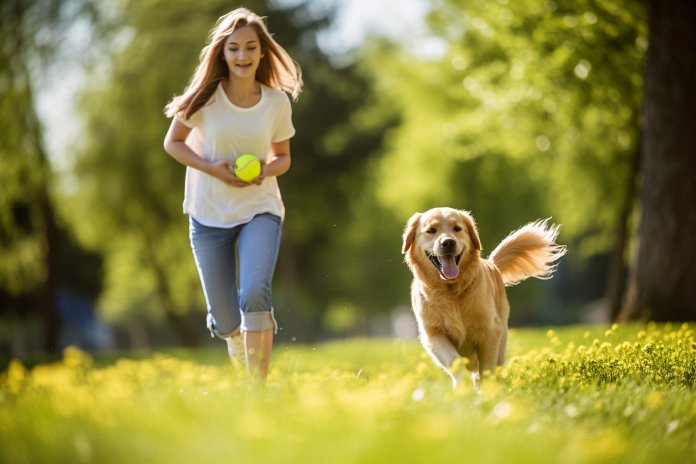
We live in an age where bullies are prevalent, whether in the schoolyard, workplace, or even among dogs. Dogs can harass other dogs, causing tension and conflict. It’s important to understand the reasons behind this behavior if you have a bully dog.
Signs a Dog Could Be a Bully
If your dog exhibits behaviors like growling, snapping, or trying to mount other dogs, they may be attempting to assert dominance. Bully dogs will harass every dog they encounter, barking and lunging to establish their dominance. They may also engage in aggressive behavior with other dogs over toys, food, or owner attention.
Body Language
Look for signs like growling, staring, barking, snapping, and biting, as well as a stiff tail and other submissive behaviors, to determine if a dog is harassing others.
The History of Dogs Harassing
The idea that dogs learn to bully from wolves may not be accurate. Dogs observe and mimic human behavior, so they may pick up on our harassing ways. Additionally, dogs have evolved alongside humans and have a similar cognitive ability to that of a toddler.
The Science of Bossy Dogs
Certain breeds of dogs were historically bred for aggression and physical prowess, such as Mastiffs and Pitbulls. However, aggression does not necessarily equate to being a bully. Aggression can be a result of lack of socialization or improper training.
Training Your Dog Not to Harass Others
Physical punishments are not effective in training dogs. Positive reinforcement and redirection techniques are more beneficial. If your dog exhibits bullying behavior, remove them from the situation and use commands or cues to interrupt and discourage the behavior. Consider seeking the help of a professional dog trainer.
Safety Tips for Dogs that Harass
If your dog is a bully, it may be best to keep them away from the dog park to prevent conflicts. Teach them proper social skills and consider reading articles or sharing your experiences to help other dog owners.
“In a world of bullies, let’s be the ones who teach kindness and compassion, even to our furry friends.”

Tips & Things to Know
1️⃣ Recognize the signs of a bully dog: Look out for growling, snapping, mounting, and attempts at dominance. These behaviors can indicate that your dog is trying to establish dominance over other dogs.
2️⃣ Understand the importance of socialization: Dogs that have not been properly socialized may be more likely to harass other dogs. It’s important to expose your dog to different environments, people, and dogs from a young age to teach them appropriate behavior.
3️⃣ Use positive reinforcement and training techniques: Punishing a dog for their behavior is not effective and can lead to aggression. Instead, use positive reinforcement and reward-based training to teach your dog appropriate social skills and discourage bullying behavior. Consider seeking guidance from a professional dog trainer if needed.
Frequently Asked Questions, Answered ✅
1. What are some signs that my dog may be a bully?
– Growling, snapping, and trying to mount other dogs are all signs of attempted dominance and bullying behavior.
2. How can I tell if my dog is being bullied by other dogs?
– Submissive signs such as yawning, tail tucking, rolling on their back, or whimpering can indicate that your dog is being bullied by other dogs.
3. Why do dogs harass other dogs?
– Dogs may harass other dogs due to sibling rivalry, the desire to establish dominance, or a lack of socialization and proper training.
4. How can I train my dog not to harass other dogs?
– Positive reinforcement and training techniques are recommended to teach your dog appropriate behavior and discourage bullying. Working with a professional dog trainer can also be helpful.
5. What are some safety tips for dogs that harass or are being harassed?
– Keeping a bully dog away from the dog park, using commands to interrupt rough play, teaching social skills, and seeking advice from a dog trainer are all important safety tips. Additionally, sharing your story and reading articles about preventing and addressing bullying behavior can provide valuable insights for other dog owners.